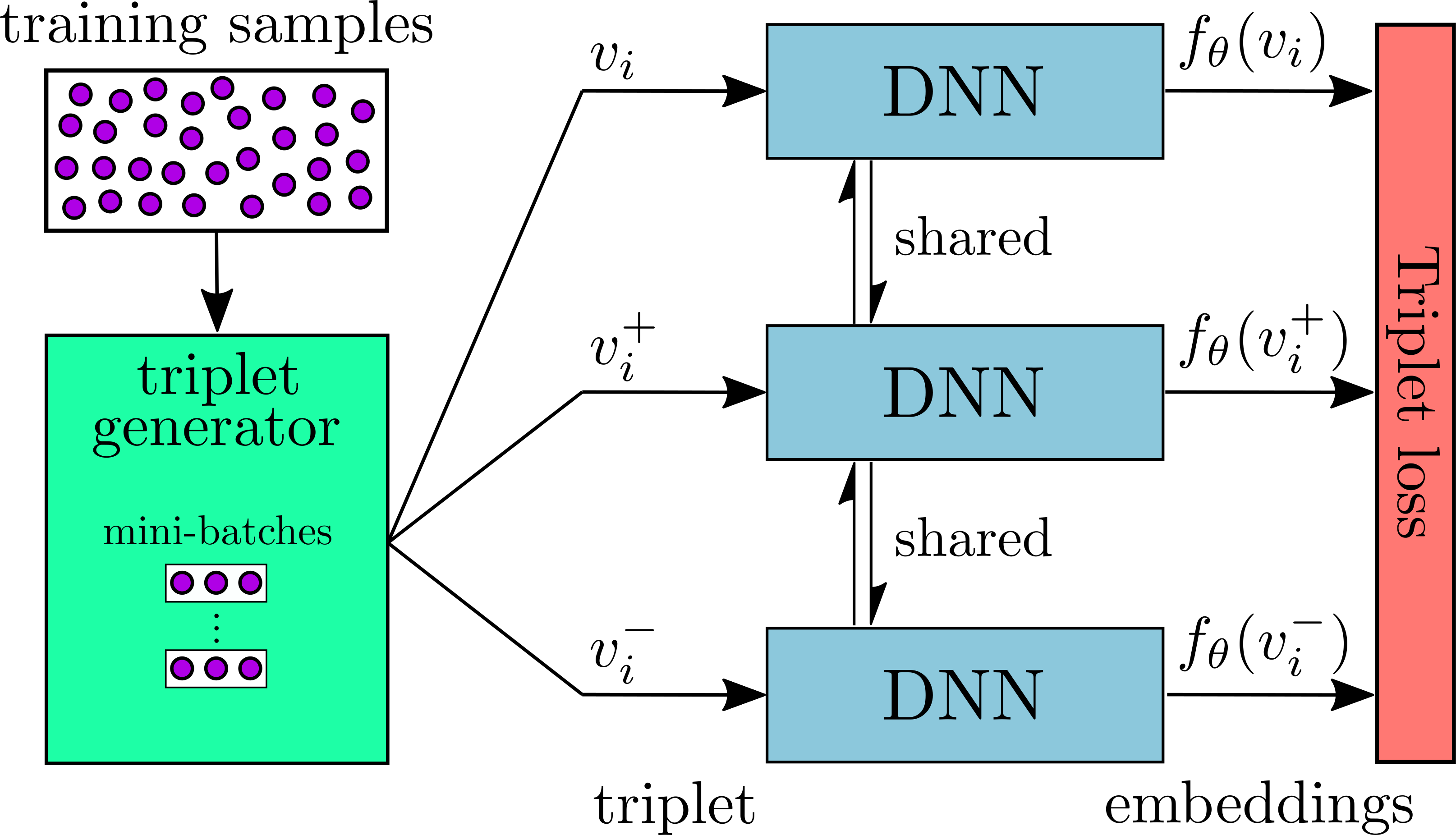Deep Relational Metric Learning
This repository is the official PyTorch implementation of Deep Relational Metric Learning.
Framework
Datasets
CUB-200-2011
Download from here.
Organize the dataset as follows:
- cub200
|- train
| |- class0
| | |- image0_1
| | |- ...
| |- ...
|- test
|- class100
| |- image100_1
| |- ...
|- ...
Cars196
Download from here.
Organize the dataset as follows:
- cars196
|- train
| |- class0
| | |- image0_1
| | |- ...
| |- ...
|- test
|- class98
| |- image98_1
| |- ...
|- ...
Requirements
To install requirements:
pip install -r requirements.txt
Training
Baseline models
To train the baseline model with the ProxyAnchor loss on CUB200, run this command:
CUDA_VISIBLE_DEVICES=0 python examples/train/main.py \
--save_name <experiment-name> \
--data_path <path-of-data> \
--phase train \
--device 0 \
--setting proxy_baseline \
--dataset cub200 \
--num_classes 100 \
--batch_size 120 \
--delete_old
To train the baseline model with the ProxyAnchor loss on Cars196, run this command:
CUDA_VISIBLE_DEVICES=0 python examples/train/main.py \
--save_name <experiment-name> \
--data_path <path-of-data> \
--phase train \
--device 0 \
--setting proxy_baseline \
--dataset cars196 \
--num_classes 98 \
--batch_size 120 \
--delete_old
DRML models
To train the proposed DRML model using the ProxyAnchor loss on CUB200 in the paper, run this command:
CUDA_VISIBLE_DEVICES=0 python examples/train/main.py \
--save_name <experiment-name> \
--data_path <path-of-data> \
--phase train \
--device 0 \
--setting proxy \
--dataset cub200 \
--num_classes 100 \
--batch_size 120 \
--delete_old
To train the proposed DRML model using the ProxyAnchor loss on Cars196 in the paper, run this command:
CUDA_VISIBLE_DEVICES=0 python examples/train/main.py \
--save_name <experiment-name> \
--data_path <path-of-data> \
--phase train \
--device 0 \
--setting proxy \
--dataset cars196 \
--num_classes 98 \
--batch_size 120 \
--delete_old
Device
We tested our code on a linux machine with an Nvidia RTX 3090 GPU card. We recommend using a GPU card with a memory > 8GB (BN-Inception + batch-size of 120 ).
Results
The baseline models achieve the following performances:
| Model name | Recall @ 1 | Recall @ 2 | Recall @ 4 | Recall @ 8 | NMI |
|---|---|---|---|---|---|
| cub200-ProxyAnchor-baseline | 67.3 | 77.7 | 85.7 | 91.4 | 68.7 |
| cars196-ProxyAnchor-baseline | 84.4 | 90.7 | 94.3 | 96.8 | 69.7 |
Our models achieve the following performances:
| Model name | Recall @ 1 | Recall @ 2 | Recall @ 4 | Recall @ 8 | NMI |
|---|---|---|---|---|---|
| cub200-ProxyAnchor-ours | 68.7 | 78.6 | 86.3 | 91.6 | 69.3 |
| cars196-ProxyAnchor-ours | 86.9 | 92.1 | 95.2 | 97.4 | 72.1 |
COMING SOON
- We will upload the code for cross-validation setting soon.
- We will update the optimal hyper-parameters of the experiments soon.









